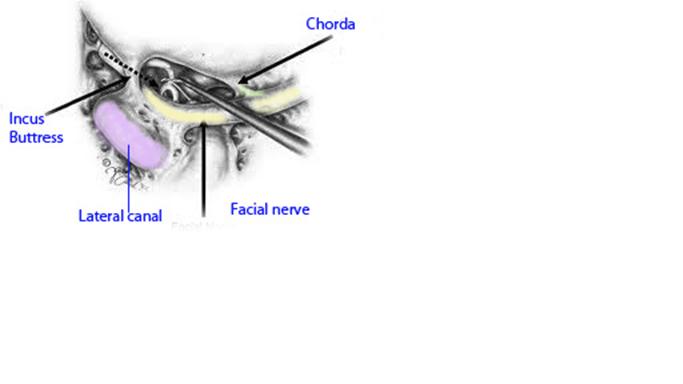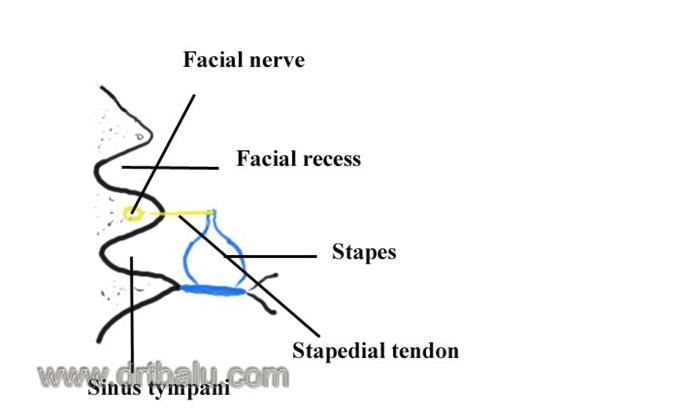Facial recess
Introduction:
Is defined as an aerated extension posterior superior portion of the middle ear cavity medial to the tympanic annulus and lateral to the fallopian canal. Boundaries:Medial – Facial nerveLateral – Tympanic annulusSuperior – Incus buttress (near the short process of incus)Running through the wall between these two structures with varying degrees of obliquity is the chorda tympani nerve. Chorda tympani nerve always run medial to the tympanic membrane.Drilling in this area between the facial nerve and annulus in the angle formed by the chorda tympani nerve leads into the middle ear cavity. This surgical approach to the middle ear cavity is known as facial recess approach. Uses of facial recess approach:
1. Used to reach hypotympanum of middle ear
2. Used to place cochlear implant electrode into the cochlea via the round window.
3. Horizontal portion of facial nerve can be accessed via this approach. Hence this approach can be used to perform decompression of horizontal division of facial nerve.
Occasionally cholesteatoma of middle ear cavity can invade the mastoid antrum without involving the aditus. It has been hypothesized that drilling this area can provide additional avenue for mastoid aeration.
Land marks used to identify this region:
1. External genu of facial nerve medially
2. Fossa incudes superiorly
3. Chorda tympani laterally
4. Tympanic membrane anteriorly and laterally.

